Let's talk about BOOKS
And we'll throw in an entire history of Zine Hug, too...
Hi everyone!
Tomorrow (Sunday 9/15) is Bookluck, a small press picnic for bookmakers at Gas Works Park in Seattle. You can bring your books to share, trade, and give away. We’ll bring our ceremonial offering of quiche from Bakery Nouveau. RSVP here!
Speaking of books, we’ve just finished a marathon re-printing of comic books including Mystery Star, My Beautiful CEO Volumes 1 and 2, Sun Cell Volume 1, and Rooms 1-22. We don’t often talk about our comics here, but it is a big part of our studio practice.
We originally started this newsletter to specifically discuss risograph animation, but that is just one part of what we do here at Zine Hug. “What DO you do at Zine Hug?” or “What IS Zine Hug?” you may be asking. We aren’t exactly an animation studio or a book publisher and we often follow our interests at the moment ¯\_(ツ)_/¯
Recently, an old friend asked about how we got into making zines and participating in the bookmaking community. Alex shared some of our origin story with them as follows:
“I decided to make a Dragon Ball fanzine using the color printer at my job in 2015. I had just finished watching the series for the first time and was obsessed. I organized a facebook group for it and friends picked a Dragon Ball character out of a hat to make an illustration of for the book.
I laserjet printed 30 copies of the book and silkscreened the covers. Most of the copies went to the artists, but I sold a few for $5 to people who learned about it just through word of mouth. I decided to make a tumblr to post the images on and called it ‘zinehug’ because ‘all of our drawings are in a big group hug in the zine together.’
From there, we made zines of Studio Ghibli, Cowboy Bebop/Samurai Champloo, Dragon Ball Z, and Mob Psycho 100/ One Punch Man, pretty much in the same manor. I worked at an art college that gave me access to printing equipment, so I stopped using the laserjet printer after the first zine and only used silkscreen, letterpress, and risograph printing for the rest. It all grew really organically and was propelled by the enthusiasm of all of the collaborators.
I kept organizing these fan zines for fun for two years. I was working in animation and looking for a way to tell longer-form stories, so I turned to making comics using the risograph printer. After encouraging some other animator friends to do the same, Zine Hug was publishing original comics from a variety of artists and tabling at indie comix festivals like MoCCA and CAB.
All of this backstory is to say that I never had a real plan to start a business or grow Zine Hug into what it is now. I sometimes joke that the tagline of Zine Hug should be ‘Doing whatever we feel like since 2015.’ It is hard to categorize Zine Hug properly because it is really random. Anime fanzines, sci-fi and absurdist comics, art books in a variety of illustrated styles (sometimes cute, sometimes terrifying), and now, risograph animation. Even the name Zine Hug was quickly chosen on a whim.
What has kept me going is the freedom to explore what I’m interested in and not feeling like I need to do anything in particular. It has also helped that Zine Hug has always been a hobby and no one depends on it for income. In the beginning, any money made was used to purchase paper and ink for the next project, and no one really pocketed anything. We mostly collaborate with good friends and people who reach out to us with work we love.

The other thing that has kept me going is meeting other people in the indie publishing community. Once you start tabling at fairs, you start meeting a ton of people who are interested in a similar art practice and I’ve made so many great friends from tabling at fests. I really recommend going to a few of these with your books, see which ones you vibe with, and make an effort to check out other tables and talk to, trade with, and buy stuff from other artists.
My biggest piece of advice is make things that you like with your friends and find a community that you want to participate in. If you can’t find that community, you can start organizing it. Apply to local fests that match your vibe as a solo artist or artist collective with your friends. If you get rejected from fests, keep making more books, grow your body of work, and try again. You’ll get an opportunity eventually, and when you do, put yourself out there and meet new people in the community.”
We’ll also include some followup questions and answers here:
How do you find out about indie festivals? I feel like I find out about a lot of events after it happens and I miss out on those opportunities.
This still happens to me all the time. I have a spreadsheet that I’ll include any fests I’m interested in on when I find out about them. I’ll never remember to check when applications open, so I’ll sign up for their newsletter and they send out reminders. (Right now ECCC and MoCCA are open for applications!)
We’ve found out about most fests throughout the years through word of mouth, which also highlights how important it is to be involved with your local community of bookmakers. You can also check out the “tour schedules” of creators that you like, people usually post these seasonally on their social media. It’s especially difficult to know about fests that happen outside of where you live, so you can reach out to people in those areas and ask what their favorite fest/event is. I’ve posted stories on Instagram asking “What is a good fest (in this area)?” and have gotten great responses.
It’s also good to get an understanding of indie comics fests vs. comic cons vs. zine fests vs. art book fairs etc. Our works are pretty varied and I’ve found that we can make a case to fit in at many of these places.
When did you start applying to those festivals? Was it based on the number of zines you had made?
I started applying when we had enough stuff to fill up a half table. I think at the time, it was 2 fanzines, a comic, a bunch of stickers and pins, and a handful of silkscreened posters that we made as college students. If you don’t have that much stuff, and you have some friends who also don’t have a lot of stuff, you can form a collective and table your stuff together, which is what Zine Hug did. Our first shows were really small maker’s markets hosted by SVA and Paper Jam at Silent Barn (RIP). We got rejected a lot and still do.
Do you feel like having a social media presence is absolutely necessary? I don't want to be attached to Instagram, and my self esteem is still very weak when it comes to the amount of interaction I have when I make posts.
I feel like having an Instagram is important for us because we’ve already built a small following throughout the years on there, and it’s still a great avenue for people to share our work with each other. I’m not sure if our audience would know what we are up to without Instagram.
I totally get how you’re feeling about social media though, and I’m definitely feeling the fatigue of keeping up with it. Many people have expressed this to us, and that’s why there seems to be a big migration to newsletters (like this substack).
I think it’s important to find a way to share your art publicly, whether it is a personal website, social media that fits for you, a personal blog or newsletter, etc. Figuring out a healthy way to engage with these things is hard and may take some exploration to discover.
When you make original art and comics, what is your creative process like?
For both me and Zack, the process begins with writing. I think Zack is more stream-of-consciousness style and I’m more of like a bulleted-list kind of writer. Storytelling is the reason we got into making comics, so taking time to write the story we’re trying to tell is really important.
Something else we both want to note is that creating work outside of a structured school or work environment is really difficult. This is why both of us need to have some kind of hard deadline, or it is rare for us to actually finish anything. These deadlines must be non-negotiable, so we often use the date of an upcoming festival or convention to plan projects around.
When I make comics, I’ve started to envision the spread of 2 pages and organize the story 2 pages at a time. Then I’ll go through a process of editing rough thumbnail pages before cleaning up and coloring.
Zack, in my opinion, is an amazing illustrator. There are a few reasons why he is so good, and one reason is that he draws all the time. If he is not drawing for work, he is drawing on his iPad. There is usually a good idea to use in the sea of doodles.
Do you have any advice when it comes to zine-making? Like, how much time do you put into a zine before deciding to print and bind it? What is that timeline like for you?
This goes back to the idea of having a non-negotiable deadline. Sometimes, we take so long to finish up the drawing or animation of a project, that all of the printing and binding is done over the course of 1 or 2 days. We don’t really want to work this way, but sometimes (a lot of times) it happens like that.
It has become important to us to finish projects and move on - so risograph printing is fitting because it is fast and the results are beautiful even if they aren’t perfect.
Generally, a 30-40 page comic or a 15 second animation will take about a month to complete digitally, and then a week or less to print. When I say a month, I mean 12 - 14 hours a day for 30 days straight. We both have this bad habit of working nonstop, and we’ve recently been discussing how we can pace ourselves better.
Thanks for reaching out to start this conversation with us, Esther!
Check out their first riso-printed zine, Shitty Photos of Dogs.
If you’re curious about discussing bookmaking, drop us a line, or stop by Bookluck tomorrow, or check out one of our upcoming events:
Upcoming Events
9/15 Bookluck - Gas Works Park, Seattle
9/21 Portland Zine Symposium - Smith Ballroom PSU, Portland
10/5 Gamjam Art Fair - Lloyd Center, Portland
10/25 -27 Lightbox Expo - Pasadena Convention Center
11/2 Short Run - Fischer Pavillion, Seattle Center
11/9 Virtual Risograph Animation Workshop - Online
12/9 Goodnight Market - Reclaim Clay, C-ID Seattle
12/14-15 sounds about riso - lucky risograph, Brooklyn



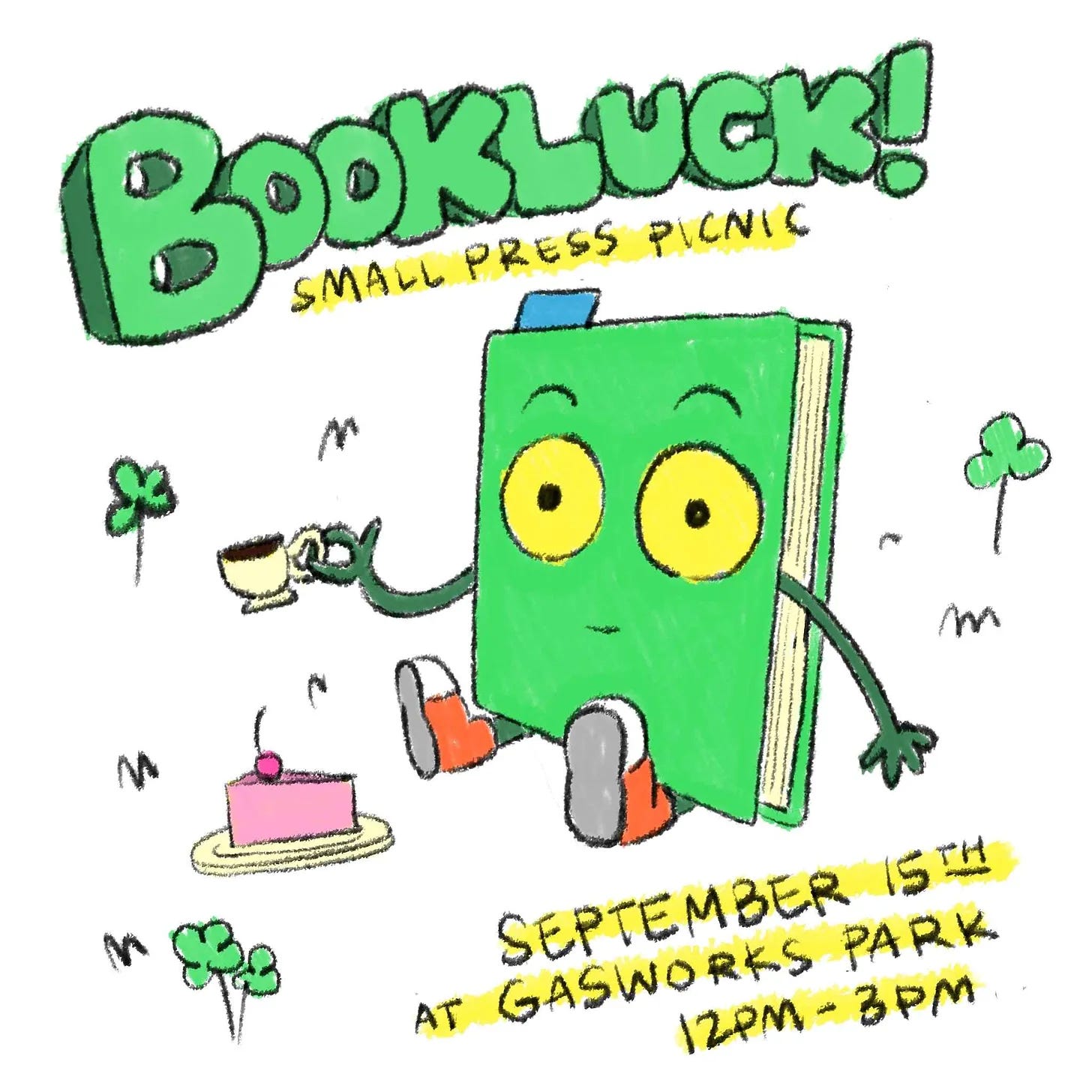

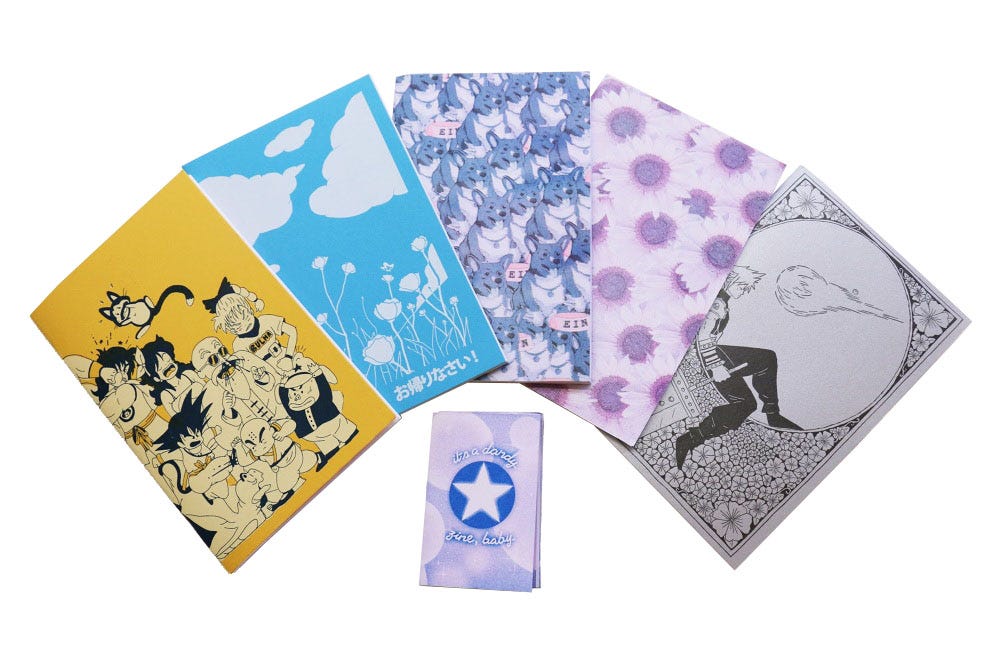
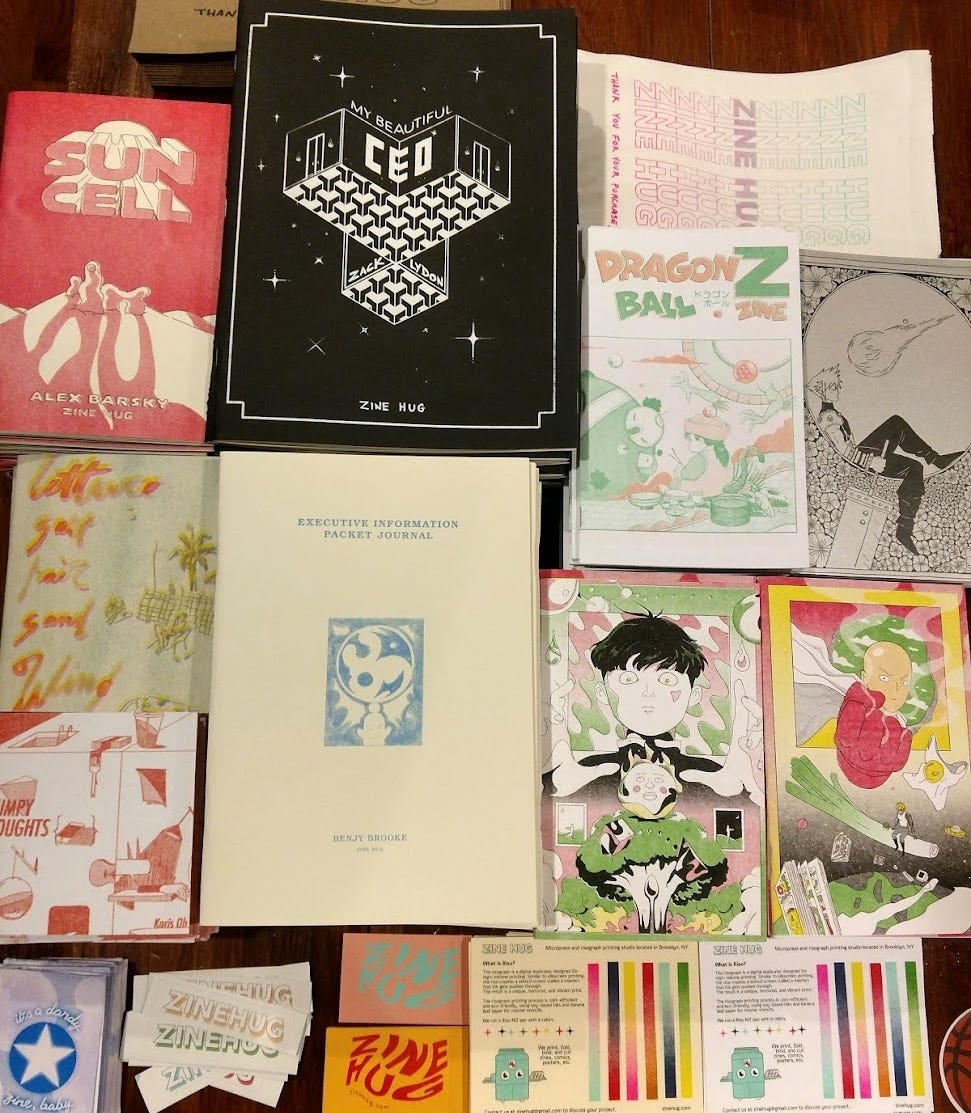
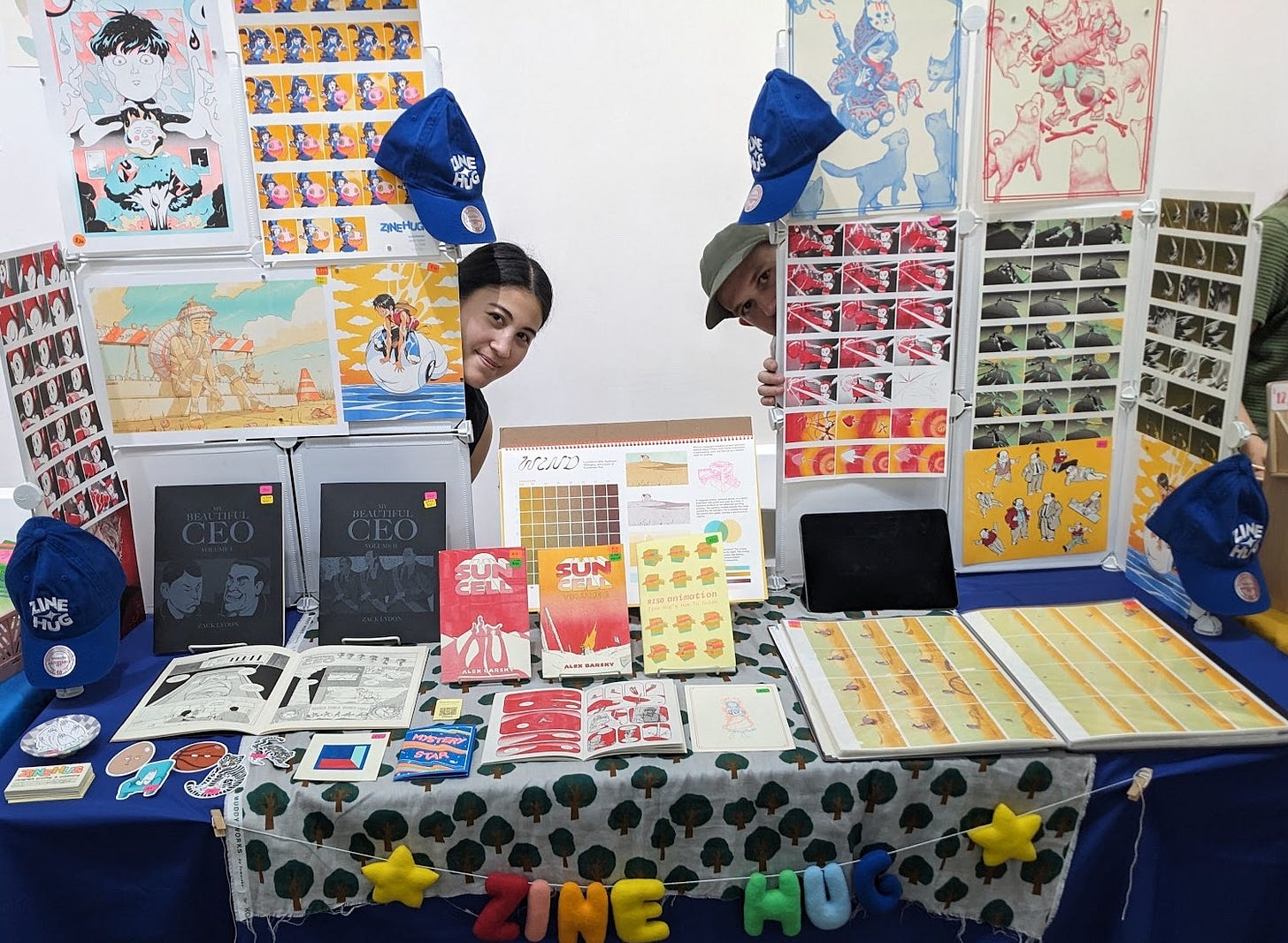
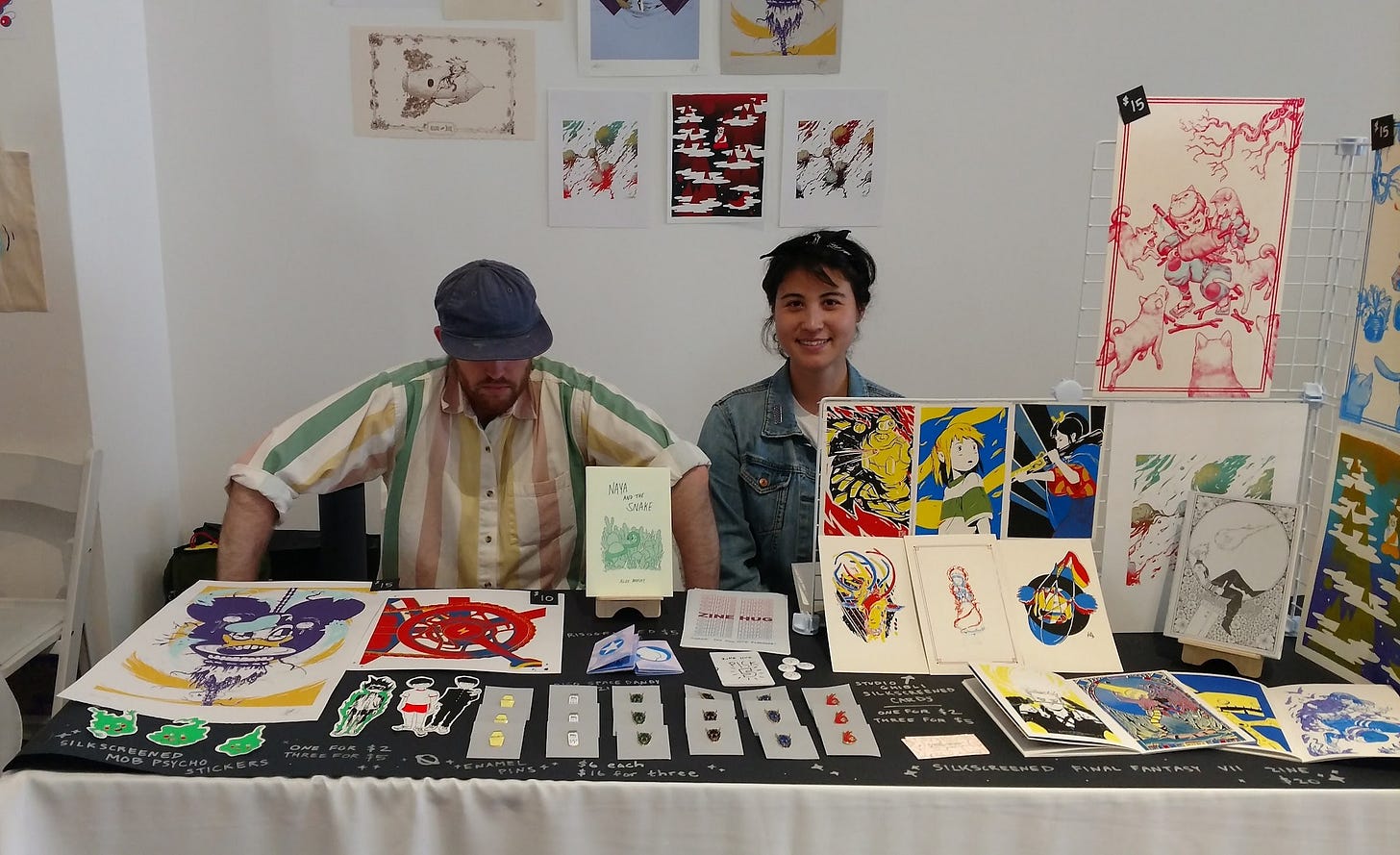
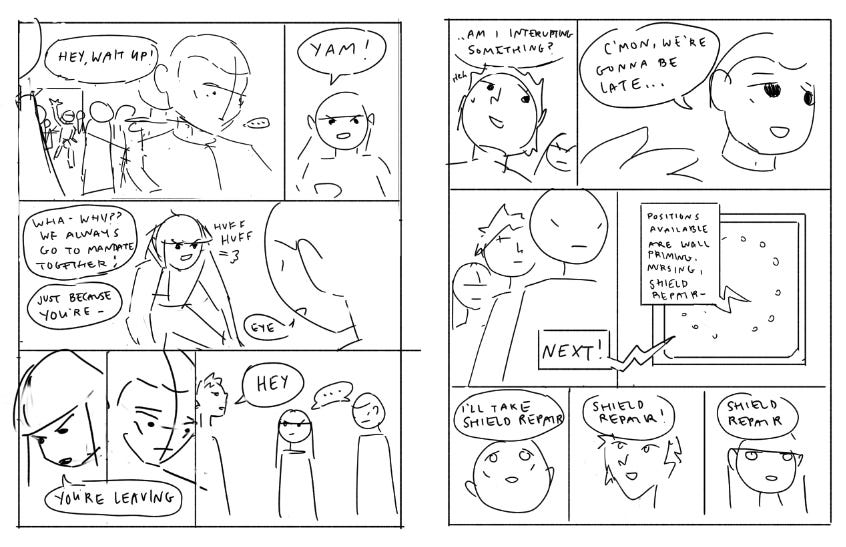
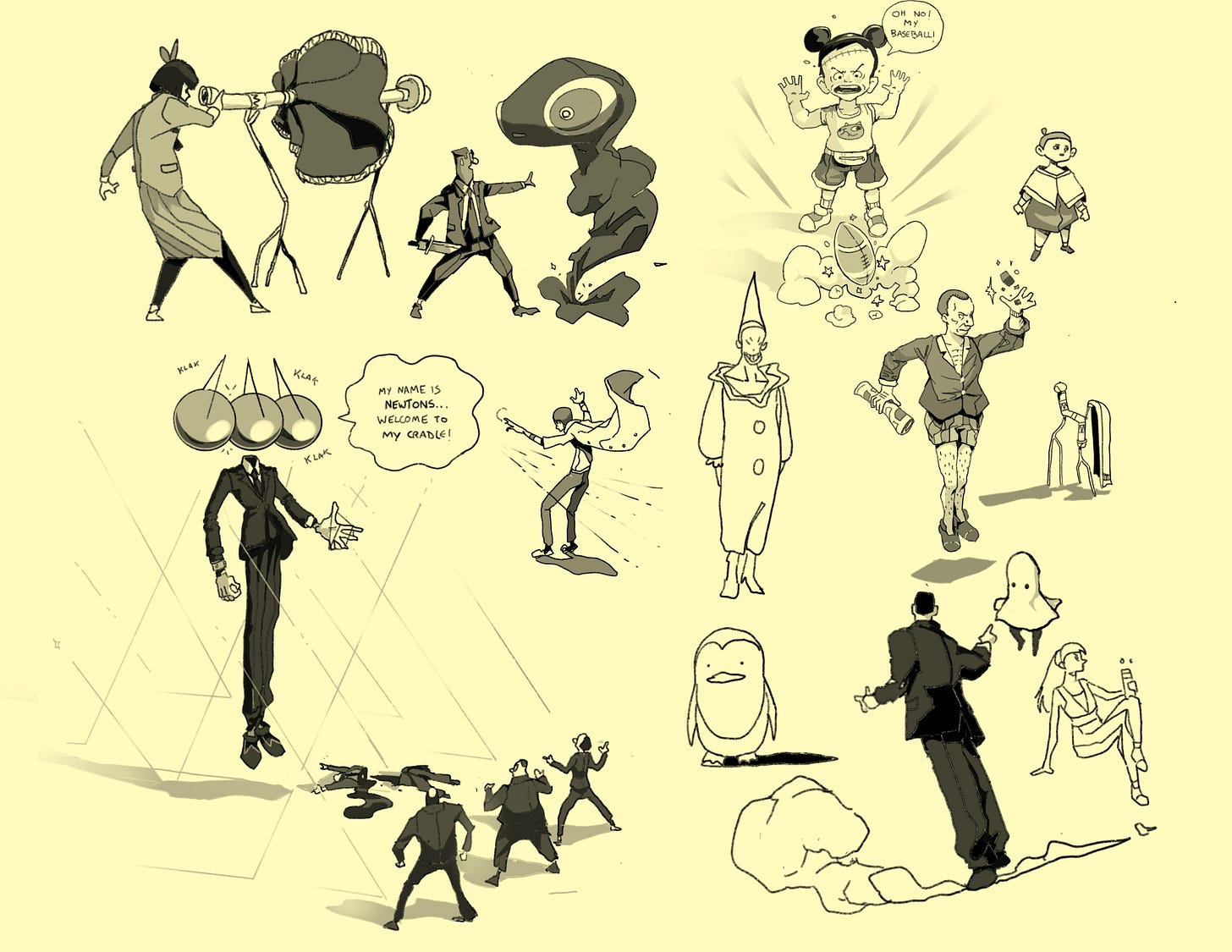
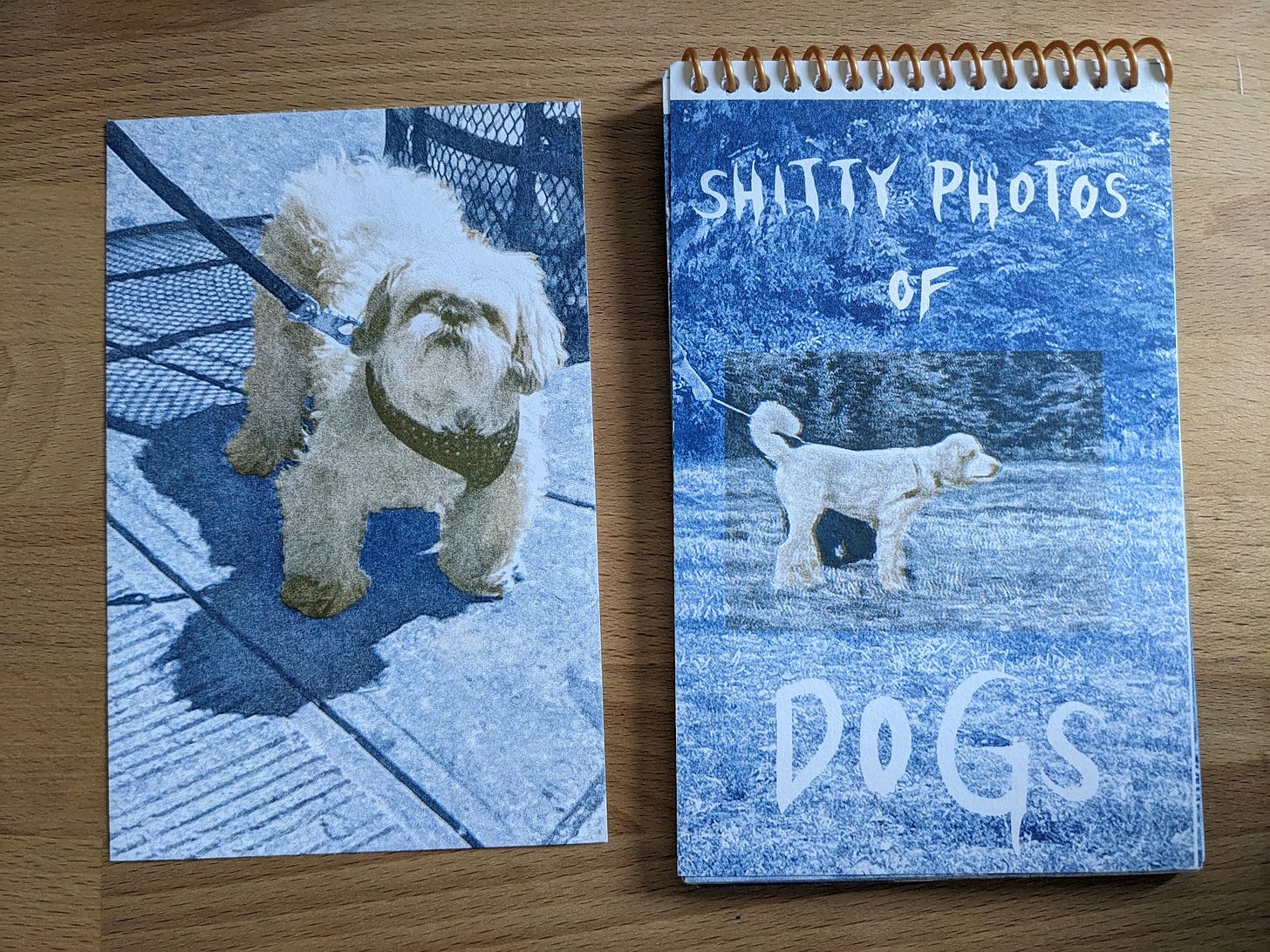
Great advice, thanks for sharing your experience!